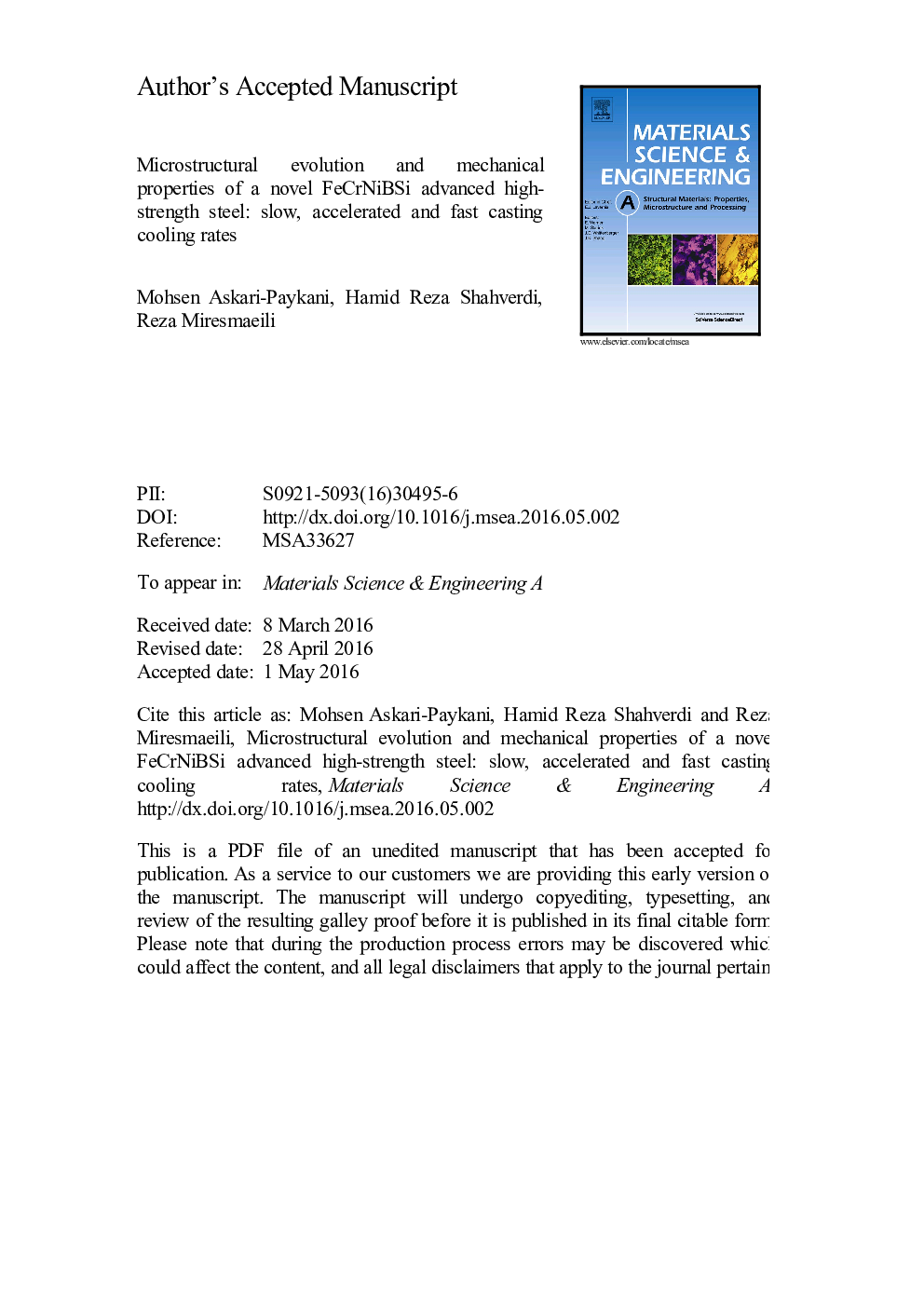| Article ID | Journal | Published Year | Pages | File Type |
|---|---|---|---|---|
| 7975357 | Materials Science and Engineering: A | 2016 | 67 Pages |
Abstract
In the current work, three different solidification routes and a two-step heat treatment process were applied to a novel FeCrNiBSi alloy system to introduce a new candidate for advanced high-strength steels. The evolution of the microstructure after solidification, heat treatment, and tensile deformation was characterized using optical and electron microscopy techniques, as well as hardness and room temperature uniaxial tensile tests. The effects of the different solidification routes and heat treatment parameters on the deformation and fracture mechanisms of this steel are discussed. Grain refinement, precipitation hardening, and solid solution as a result of the fast casting cooling rate led to an increase in strength at improved ductility. This result can be explained partly by the less severe stress/strain partitioning at the matrix grain/M2B interfaces and better interface cohesion. Moreover, the stress/strain partitioning characteristics between the matrix grains and M2B led to a higher initial strain hardening rate. The fast casting cooling rate further promoted ductile fracture mechanisms, which is a result of increased cleavage fracture stress. The higher casting cooling rate and two-step heat treatment resulted in a strong increase in formability index, from 8Â GPa% to 24Â GPa%, at which the mechanical properties occupy the TRIP envelope. Heat treatment of the fast-cooling specimens led to a small reduction in yield and tensile strength and 22% total elongation percentage improvement (from 10% to 32%).
Keywords
Related Topics
Physical Sciences and Engineering
Materials Science
Materials Science (General)
Authors
Mohsen Askari-Paykani, Hamid Reza Shahverdi, Reza Miresmaeili,
